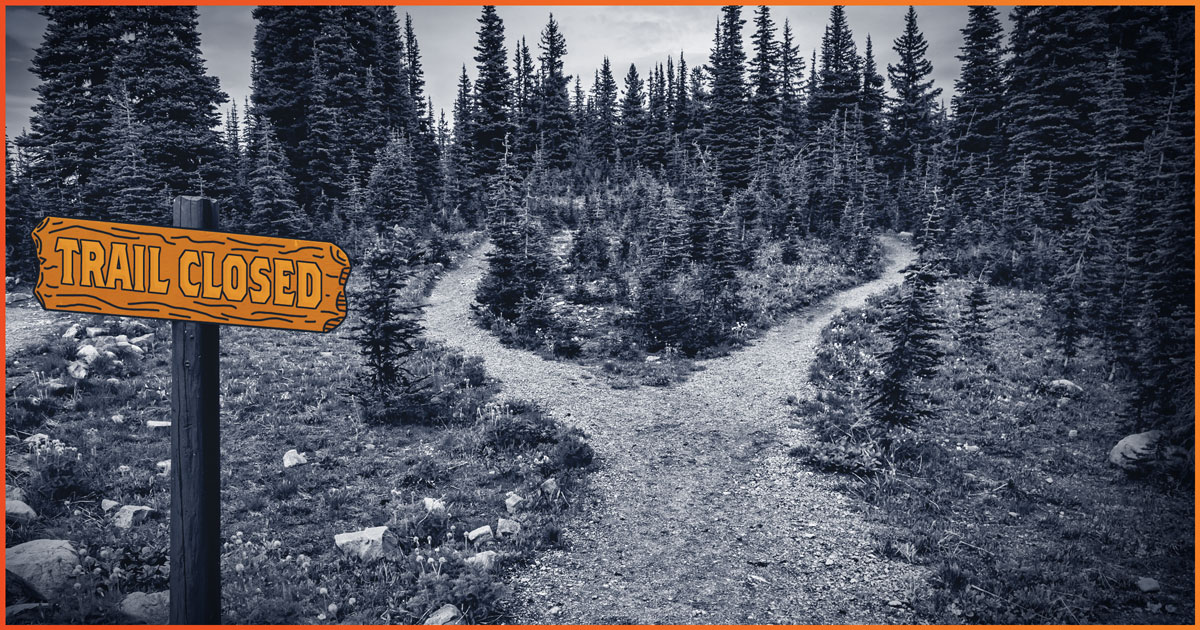
On a recent trip to summit Grays Peak in Colorado, I learned a valuable lesson about clarity. It served as a reminder of the importance of clear signs guiding your destination, whether hiking or in business.
Sticking to the Trail
Grays Peak is the tallest peak in Colorado’s Front Range at 14,270 feet. Grays Peak and nearby Torreys Peak offer stunning views and fresh mountain air.
These mountains consist of chunks of jagged rock. Hikers can more safely ascend the mountain by sticking to the trail where most of the rocks sit firmly in place. Off the trail, loose rocks increase the risk of twisted ankles or other injuries from slipping and falling.
Inconsistent Signs
For the most part, you can easily stick to the trail. With the trail visible and posted signs, the correct route should be obvious. On our hike that day we saw several signs:
- A sign at the trailhead had the familiar curved border and recognizable fonts of the National Forest Service.
- Another sign (about a mile into the trail) offered details about the Grays Peak National Recreation Trail. This sign had a rectangular shape and different fonts than the familiar National Forest signs.
- Several unusual fabric banners appeared on the way up the steep mountainside. They warned hikers to exercise caution from possible falling rocks due to trail construction.
It seemed the farther up the mountain we went, the more inconsistent the signs and trail markings.
Ignoring Signs
Quite high on the mountain and shortly after one of the trail construction signs, we came to a makeshift sign. It displayed the handwritten words “Trail Closed.”
I happened to be in the lead at that moment. I saw no other trail, I didn’t see anyone working on the trail, and the trail headed toward our destination. I assumed a maintenance crew had mistakenly left up the sign, so I ignored it and continued up the trail.
About 50 yards farther, the trail started to feel pretty sketchy. It had lots of loose rock and an unclear trail bed. I paused and looked back down the mountain. From my new vantage point, I saw that the trail made a hard left turn at the “Trail Closed” sign. Turning around, we resumed the hike on the safer switchback we’d failed to see after ignoring the sign.
One key thing contributed to my inability to see the real trail and feel confident about the signs. The inconsistent signs seemed to lack clear messaging authority. I somehow convinced myself that something as important as a closed trail would have a clear, consistent, authoritative sign.
Do You Give Consistent Signs?
As a leader, do you keep your signs to your team consistent? Do you speak with clarity and authority about goals so your team doesn’t have to wonder about or question their reliability?
Or do you let your signals get sloppy and confusing during rugged moments in the journey? When the going gets tough, leaders need to stay consistent.
Comforting Clarity
This realization about clear signs reminded me of the comforting clarity of a consistent Meeting Pulse in your business.
Your team gains a deep sense of clarity with consistent annual and quarterly planning sessions. A weekly Level 10 Meeting™ that starts on time, ends on time, and has the same agenda furthers that clarity.
Confusion evaporates. The right people with authority attend and decide how to address real issues in the business. They prioritize what needs to get done in the next seven days, the next quarter, and the next year.
Confidence and Accountability
Great leaders hold their team and each other accountable. They know their company’s destination and feel confident in how the team will get there.
All because they have clear signs pointing the way. They follow those signs even if the route doesn’t appear to lead directly to the destination.
Because we followed the signs on our hike, despite initially doubting their credibility, we were rewarded with stunning views from Grays Peak. And we avoided any potential missteps or injuries. Your employees may not have the same experience if you provide inconsistent signals.
Identify your strengths and weaknesses with the Organizational Checkup™ to get on the right path to your destination.





